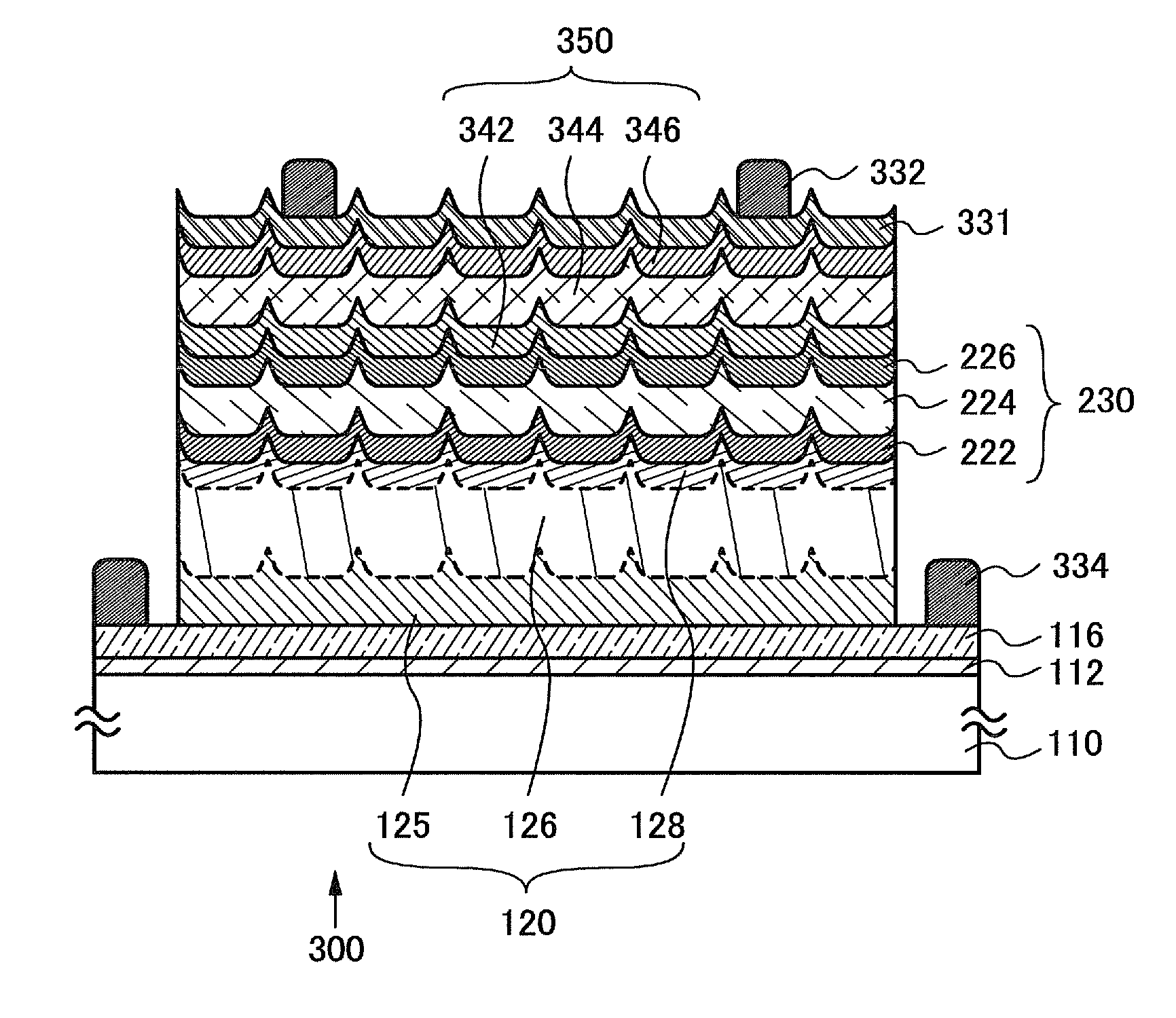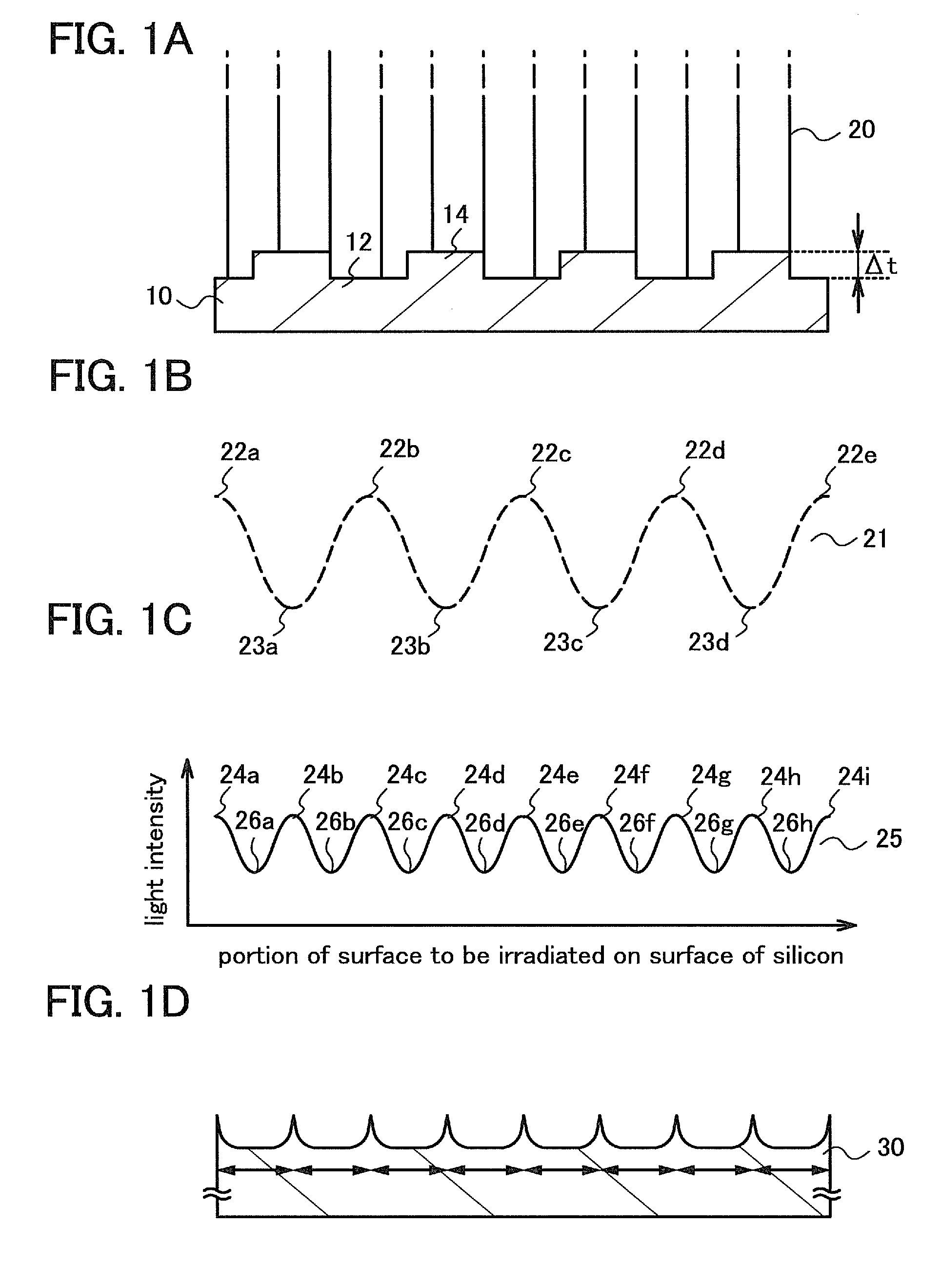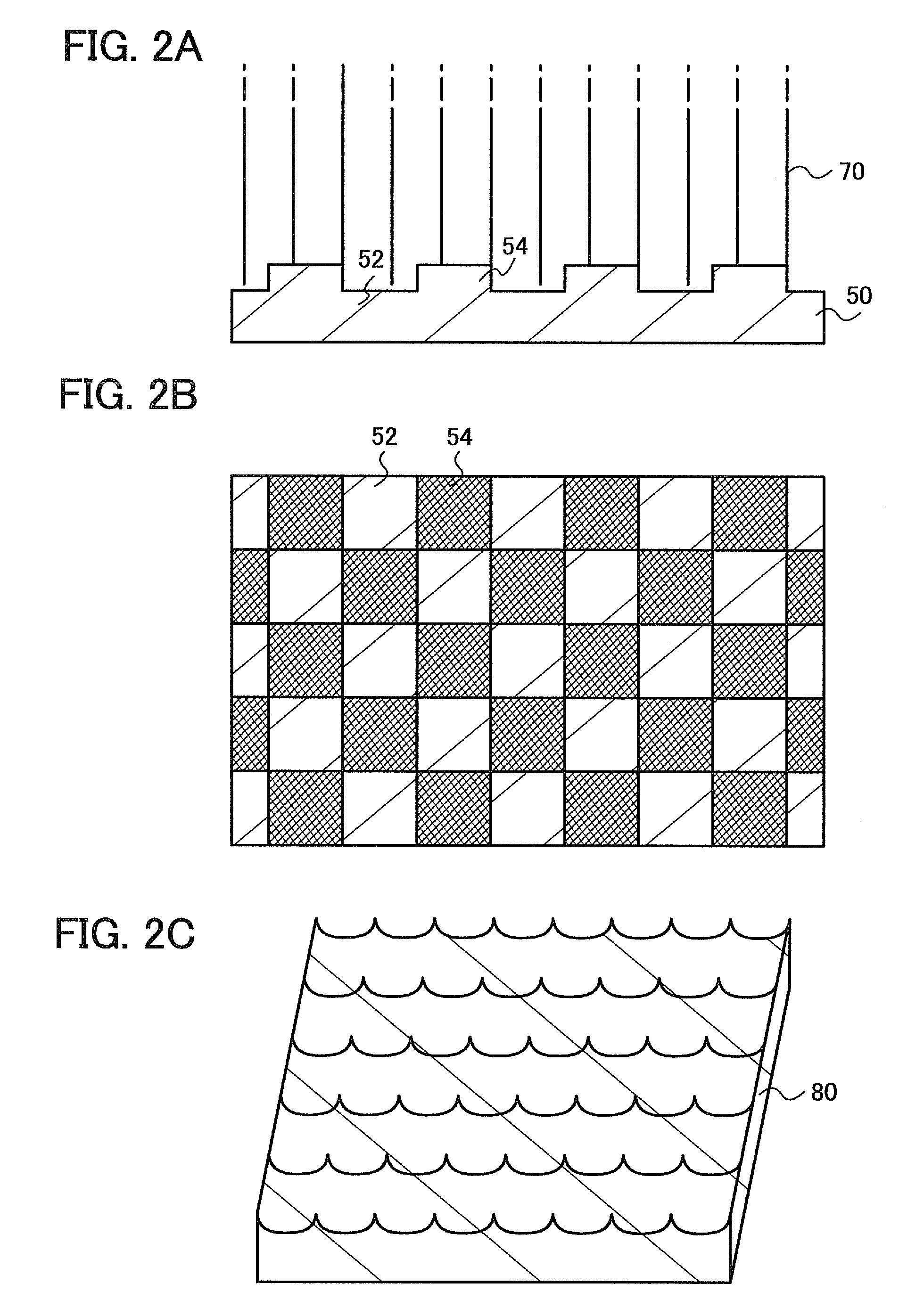Method for manufacturing photoelectric conversion device
a technology of photoelectric conversion and manufacturing method, which is applied in the direction of semiconductor/solid-state device manufacturing, semiconductor devices, electrical apparatus, etc., can solve the problems of increased manufacturing cost, difficult to obtain favorable uneven structure only by etching, and easy varying size of formed uneven structure, etc., to reduce the reflection of incident light, improve absorption, and reduce the effect of consumption of silicon as a material
- Summary
- Abstract
- Description
- Claims
- Application Information
AI Technical Summary
Benefits of technology
Problems solved by technology
Method used
Image
Examples
embodiment mode 1
[0056]One aspect of the present invention is that silicon for photoelectric conversion is irradiated with a laser beam through an optical modulator, which modulates light intensity of a laser bean regularly, whereby a silicon layer with an uneven structure is formed. Description is hereinafter made with reference to drawings.
[0057]FIGS. 1A to 1D are schematic views for explaining formation of unevenness in a silicon 30 by irradiation with a laser beam 20 through a phase shift mask 10 that is one mode of an optical modulator.
[0058]In FIG. 1A, the optical modulator modulates light intensity of the laser beam regularly. Described in this embodiment mode is an example in which a phase of the laser beam is modulated regularly using a phase shift mask 10 as the optical modulator, a light intensity distribution in which a light intensity is modulated regularly is obtained. Here, the phase shift mask refers to a mask which shifts a phase of transmitted light of an adjacent pattern by π. The...
embodiment mode 2
[0076]In this embodiment mode, a method for manufacturing a photoelectric conversion device in which unevenness is formed in a silicon layer for photoelectric conversion by irradiation with a laser beam using an optical modulator and a structure of the photoelectric conversion device formed by the method will be described.
[0077]FIG. 3A illustrates an example of a top view of a photoelectric conversion device 100 according to this embodiment mode and FIG. 3B illustrates an example of a cross sectional view thereof. Note that FIG. 3B is the example of the cross sectional view taken along the line OP in FIG. 3A.
[0078]In the photoelectric conversion device 100, a first unit cell 120 in which a single crystal silicon layer is provided is formed over a supporting substrate 110. The first unit cell 120 is provided with the first electrode 116 on the supporting substrate 110 side, and the first unit cell 120 is provided with a second electrode 132 on a surface side which is opposite to the ...
embodiment mode 3
[0173]In this embodiment mode, an example of a method for manufacturing a photoelectric conversion device which is different from that in the aforementioned embodiment mode will be described. Described in the aforementioned embodiment mode is the example in which laser treatment is performed on the first single crystal silicon layer 124 which has been separated from the single crystal silicon substrate 101, using the optical modulator to form the uneven structure on a surface. In this embodiment mode, a method for forming unevenness on a second single crystal silicon layer, which is obtained by epitaxial growth of the single crystal silicon layer separated from the single crystal silicon substrate 110, by performing laser treatment using an optical modulator will be described. Note that other structures are based on the aforementioned embodiment mode and description thereof is omitted.
[0174]The aforementioned steps up to FIG. 5B are performed and the impurity silicon layer 122 and t...
PUM
 Login to View More
Login to View More Abstract
Description
Claims
Application Information
 Login to View More
Login to View More - R&D
- Intellectual Property
- Life Sciences
- Materials
- Tech Scout
- Unparalleled Data Quality
- Higher Quality Content
- 60% Fewer Hallucinations
Browse by: Latest US Patents, China's latest patents, Technical Efficacy Thesaurus, Application Domain, Technology Topic, Popular Technical Reports.
© 2025 PatSnap. All rights reserved.Legal|Privacy policy|Modern Slavery Act Transparency Statement|Sitemap|About US| Contact US: help@patsnap.com



